-
 Bitcoin
Bitcoin $117900
0.31% -
 Ethereum
Ethereum $3766
0.28% -
 XRP
XRP $3.176
-0.31% -
 Tether USDt
Tether USDt $1.000
0.00% -
 BNB
BNB $795.6
1.51% -
 Solana
Solana $186.8
-1.09% -
 USDC
USDC $0.9999
-0.01% -
 Dogecoin
Dogecoin $0.2353
-1.33% -
 TRON
TRON $0.3226
1.49% -
 Cardano
Cardano $0.8172
-1.08% -
 Sui
Sui $4.178
3.06% -
 Hyperliquid
Hyperliquid $43.05
-3.39% -
 Stellar
Stellar $0.4367
-0.57% -
 Chainlink
Chainlink $18.62
1.47% -
 Hedera
Hedera $0.2828
6.63% -
 Bitcoin Cash
Bitcoin Cash $584.7
5.65% -
 Avalanche
Avalanche $24.81
2.53% -
 Litecoin
Litecoin $112.8
-0.88% -
 UNUS SED LEO
UNUS SED LEO $8.975
-0.08% -
 Shiba Inu
Shiba Inu $0.00001395
-1.07% -
 Toncoin
Toncoin $3.285
-1.05% -
 Ethena USDe
Ethena USDe $1.001
0.01% -
 Polkadot
Polkadot $4.123
0.76% -
 Uniswap
Uniswap $10.49
-0.18% -
 Monero
Monero $326.5
0.14% -
 Dai
Dai $0.9999
-0.02% -
 Bitget Token
Bitget Token $4.576
0.34% -
 Pepe
Pepe $0.00001247
-1.55% -
 Cronos
Cronos $0.1400
3.77% -
 Aave
Aave $295.1
-0.73%
How to use the trend strength indicator to filter out false signals in the oscillating market?
The trend strength indicator helps crypto traders filter out false signals by measuring trend strength, enhancing decision-making in volatile markets.
Jun 09, 2025 at 10:07 pm
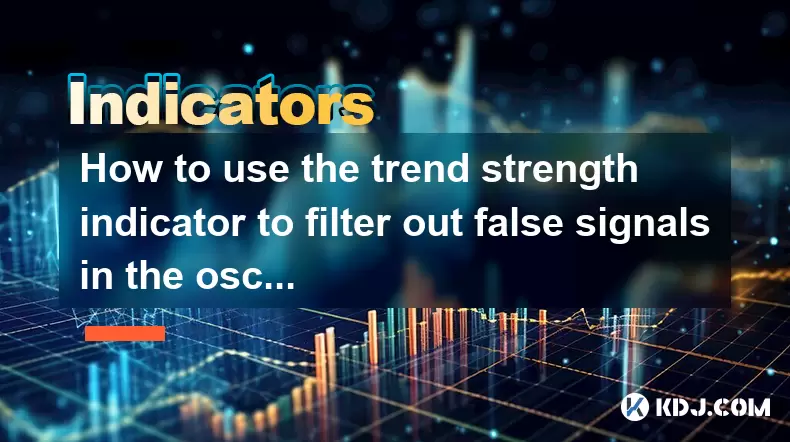
The trend strength indicator is a powerful tool for traders looking to navigate the often volatile and oscillating cryptocurrency market. By understanding how to effectively use this indicator, traders can significantly improve their ability to filter out false signals and make more informed trading decisions. This article will delve into the specifics of using the trend strength indicator to enhance trading strategies in the crypto market.
Understanding the Trend Strength Indicator
The trend strength indicator is designed to measure the strength of a prevailing trend in the market. It helps traders identify whether the market is in a strong uptrend, downtrend, or if it is experiencing a period of consolidation. In the context of the cryptocurrency market, this indicator can be particularly useful due to the high volatility and rapid price movements that are characteristic of crypto assets.
The trend strength indicator typically ranges between 0 and 100, with values above 50 indicating a bullish trend and values below 50 signaling a bearish trend. The closer the value is to 100 or 0, the stronger the trend is considered to be. For traders, understanding these values can help in distinguishing between genuine market trends and false signals that often occur in oscillating markets.
Setting Up the Trend Strength Indicator
To effectively use the trend strength indicator, traders must first set it up on their trading platform. Here are the steps to set up the indicator on a commonly used platform like TradingView:
- Open TradingView and select the cryptocurrency pair you wish to analyze.
- Click on the 'Indicators' button located at the top of the chart.
- Search for 'Trend Strength' or a similar indicator in the search bar.
- Select the indicator and add it to your chart.
- Adjust the settings if necessary, such as the period length, to suit your trading strategy.
Once the indicator is set up, traders can begin to monitor its readings and use them to filter out false signals in the market.
Identifying False Signals with the Trend Strength Indicator
In an oscillating market, false signals are common, and they can lead to poor trading decisions. The trend strength indicator helps traders identify these false signals by providing a clear measure of the market's trend strength. If the indicator shows a weak trend (values close to 50), it suggests that the market is likely oscillating and any signals received should be treated with caution.
For example, if a trader receives a buy signal but the trend strength indicator is showing a value of 52, this indicates a weak bullish trend. In such a scenario, the trader might decide to wait for a stronger trend signal before entering a trade, thereby avoiding a potential false signal.
Combining the Trend Strength Indicator with Other Tools
While the trend strength indicator is powerful on its own, combining it with other technical analysis tools can enhance its effectiveness. Traders often use the trend strength indicator in conjunction with moving averages, RSI, or MACD to confirm trends and filter out false signals.
- Moving Averages: By comparing the trend strength indicator with moving averages, traders can confirm the strength of a trend. If the trend strength indicator shows a strong trend and the moving averages are aligned in the same direction, it reinforces the validity of the trend.
- RSI (Relative Strength Index): The RSI can help identify overbought or oversold conditions. When used with the trend strength indicator, traders can avoid entering trades in overbought or oversold markets, which are more prone to false signals.
- MACD (Moving Average Convergence Divergence): The MACD can help confirm trend changes. If the trend strength indicator shows a strong trend and the MACD confirms it, traders can be more confident in their trading decisions.
Practical Example of Using the Trend Strength Indicator
To illustrate how the trend strength indicator can be used in a real-world scenario, let's consider a hypothetical trading situation involving Bitcoin (BTC).
Suppose a trader is monitoring the BTC/USD pair and notices a bullish signal on the chart. Before entering the trade, the trader checks the trend strength indicator, which shows a value of 75. This indicates a strong bullish trend, suggesting that the bullish signal is likely genuine rather than a false signal.
The trader then confirms the trend using a 50-day moving average, which is also trending upwards. Additionally, the RSI is at 60, indicating that the market is not overbought. Based on these indicators, the trader decides to enter a long position on BTC/USD, confident that the trend strength indicator has helped filter out any potential false signals.
Adjusting Strategies Based on Trend Strength
The trend strength indicator can also help traders adjust their trading strategies based on the current market conditions. When the indicator shows a strong trend, traders might opt for more aggressive trading strategies, such as increasing position sizes or using shorter timeframes for entries and exits.
Conversely, when the indicator shows a weak trend, traders might adopt more conservative strategies. This could involve reducing position sizes, using wider stop-losses, or focusing on longer timeframes to avoid being caught in false signals.
By dynamically adjusting their strategies based on the trend strength indicator, traders can better navigate the oscillating cryptocurrency market and improve their overall trading performance.
Frequently Asked Questions
Q: Can the trend strength indicator be used on any cryptocurrency pair?
A: Yes, the trend strength indicator can be applied to any cryptocurrency pair. Its effectiveness remains consistent across different pairs, although traders should consider the specific volatility and trading volume of each pair when interpreting the indicator's readings.
Q: How often should I check the trend strength indicator?
A: The frequency of checking the trend strength indicator depends on your trading strategy. For day traders, checking the indicator multiple times throughout the trading day is advisable. For swing traders or those with longer-term strategies, checking the indicator daily or weekly may be sufficient.
Q: Is the trend strength indicator suitable for beginners?
A: Yes, the trend strength indicator can be a valuable tool for beginners. Its straightforward readings make it easy to understand and apply. However, beginners should combine it with other basic technical analysis tools and practice using it in a demo account before applying it to live trading.
Q: Can the trend strength indicator be used in combination with fundamental analysis?
A: While the trend strength indicator is primarily a technical analysis tool, it can be used in conjunction with fundamental analysis. For instance, if the trend strength indicator shows a strong trend and fundamental analysis supports the direction of that trend, traders can have greater confidence in their trading decisions.
Disclaimer:info@kdj.com
The information provided is not trading advice. kdj.com does not assume any responsibility for any investments made based on the information provided in this article. Cryptocurrencies are highly volatile and it is highly recommended that you invest with caution after thorough research!
If you believe that the content used on this website infringes your copyright, please contact us immediately (info@kdj.com) and we will delete it promptly.
- Cryptos to Watch in 2025: Punisher Coin, Chainlink, and the Altcoin Arena
- 2025-07-27 18:30:13
- Bitcoin, Altcoins, Rebound: Navigating the Crypto Comeback Trail
- 2025-07-27 18:30:13
- Ethereum, Bitcoin, and Altcoins: A Shift in Crypto Tides?
- 2025-07-27 19:10:13
- Windtree Therapeutics' Bold BNB Strategy: A $520 Million Crypto Play
- 2025-07-27 19:10:13
- Solana, Staking, and Unilabs: What's the Buzz in the Crypto Space?
- 2025-07-27 16:50:13
- VeChain, HBAR, Remittix: Navigating the Crypto Landscape in 2025
- 2025-07-27 17:10:12
Related knowledge
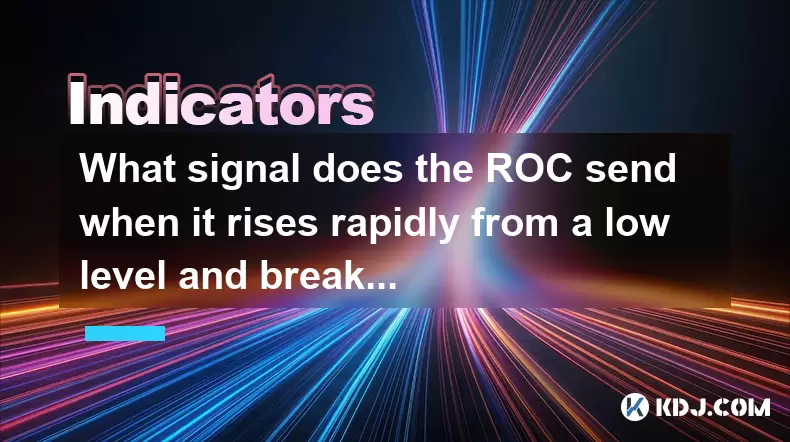
What signal does the ROC send when it rises rapidly from a low level and breaks through the zero axis?
Jul 27,2025 at 10:15am
Understanding the Rate of Change (ROC) IndicatorThe Rate of Change (ROC) is a momentum-based oscillator used in technical analysis to measure the perc...
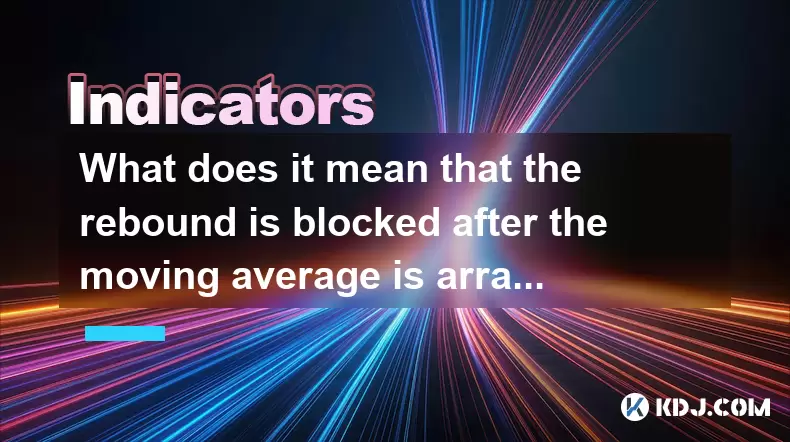
What does it mean that the rebound is blocked after the moving average is arranged in a short position for the first time?
Jul 26,2025 at 10:51am
Understanding the Short-Term Moving Average ConfigurationWhen traders refer to a 'short position arrangement' in moving averages, they are describing ...
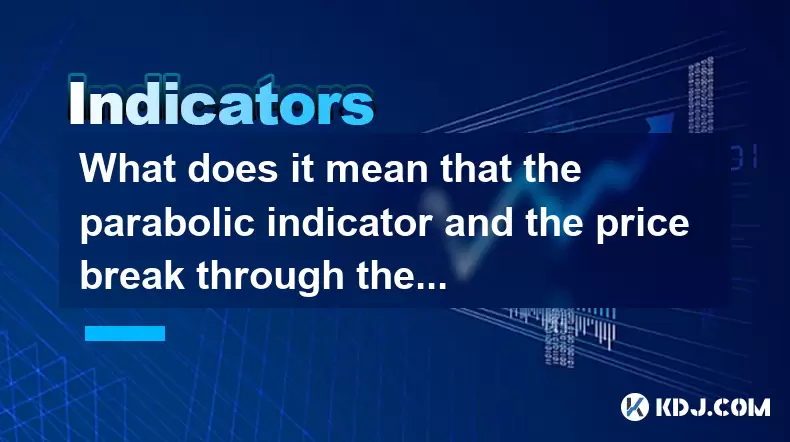
What does it mean that the parabolic indicator and the price break through the previous high at the same time?
Jul 26,2025 at 07:22pm
Understanding the Parabolic Indicator (SAR)The Parabolic SAR (Stop and Reverse) is a technical analysis tool developed by J. Welles Wilder to identify...
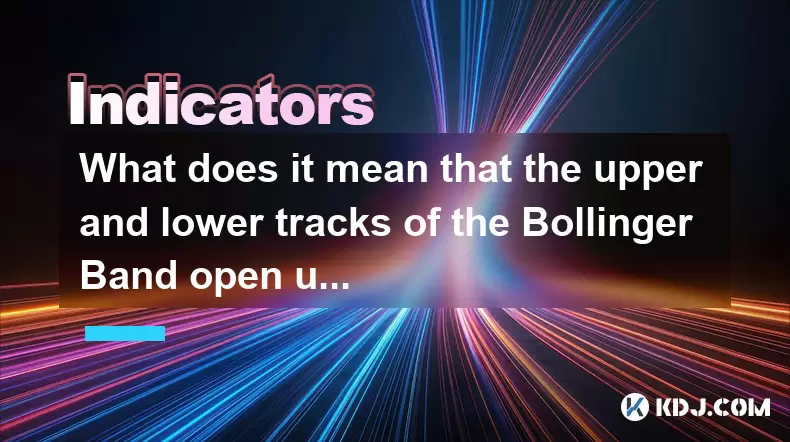
What does it mean that the upper and lower tracks of the Bollinger Band open upward at the same time?
Jul 27,2025 at 02:49pm
Understanding the Bollinger Band StructureThe Bollinger Band is a widely used technical analysis tool developed by John Bollinger. It consists of thre...
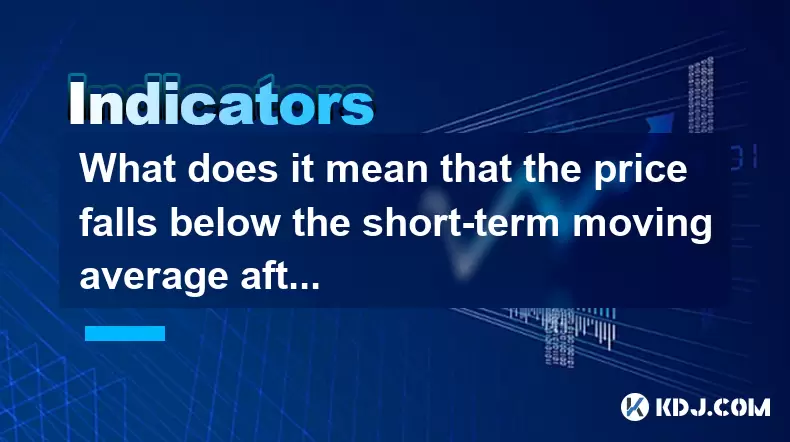
What does it mean that the price falls below the short-term moving average after the RSI top divergence?
Jul 26,2025 at 11:01pm
Understanding RSI Top Divergence in Cryptocurrency TradingThe Relative Strength Index (RSI) is a momentum oscillator widely used in cryptocurrency tra...
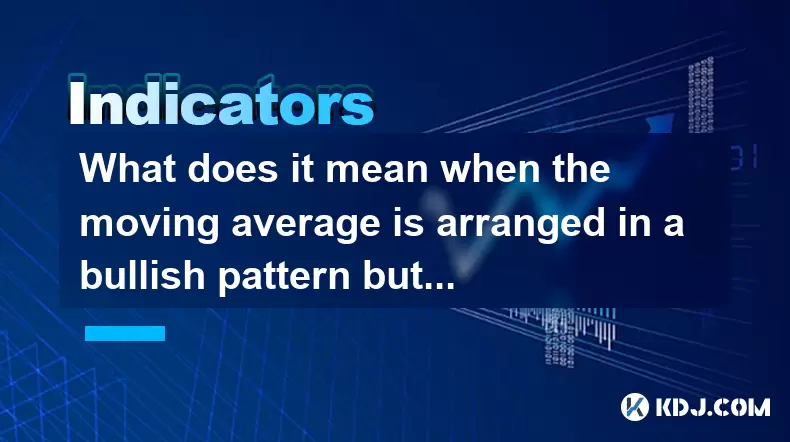
What does it mean when the moving average is arranged in a bullish pattern but the MACD bar is shortened?
Jul 27,2025 at 06:07am
Understanding the Bullish Moving Average PatternWhen traders observe a bullish moving average pattern, they typically refer to a configuration where s...

What signal does the ROC send when it rises rapidly from a low level and breaks through the zero axis?
Jul 27,2025 at 10:15am
Understanding the Rate of Change (ROC) IndicatorThe Rate of Change (ROC) is a momentum-based oscillator used in technical analysis to measure the perc...

What does it mean that the rebound is blocked after the moving average is arranged in a short position for the first time?
Jul 26,2025 at 10:51am
Understanding the Short-Term Moving Average ConfigurationWhen traders refer to a 'short position arrangement' in moving averages, they are describing ...

What does it mean that the parabolic indicator and the price break through the previous high at the same time?
Jul 26,2025 at 07:22pm
Understanding the Parabolic Indicator (SAR)The Parabolic SAR (Stop and Reverse) is a technical analysis tool developed by J. Welles Wilder to identify...

What does it mean that the upper and lower tracks of the Bollinger Band open upward at the same time?
Jul 27,2025 at 02:49pm
Understanding the Bollinger Band StructureThe Bollinger Band is a widely used technical analysis tool developed by John Bollinger. It consists of thre...

What does it mean that the price falls below the short-term moving average after the RSI top divergence?
Jul 26,2025 at 11:01pm
Understanding RSI Top Divergence in Cryptocurrency TradingThe Relative Strength Index (RSI) is a momentum oscillator widely used in cryptocurrency tra...

What does it mean when the moving average is arranged in a bullish pattern but the MACD bar is shortened?
Jul 27,2025 at 06:07am
Understanding the Bullish Moving Average PatternWhen traders observe a bullish moving average pattern, they typically refer to a configuration where s...
See all articles

























































































